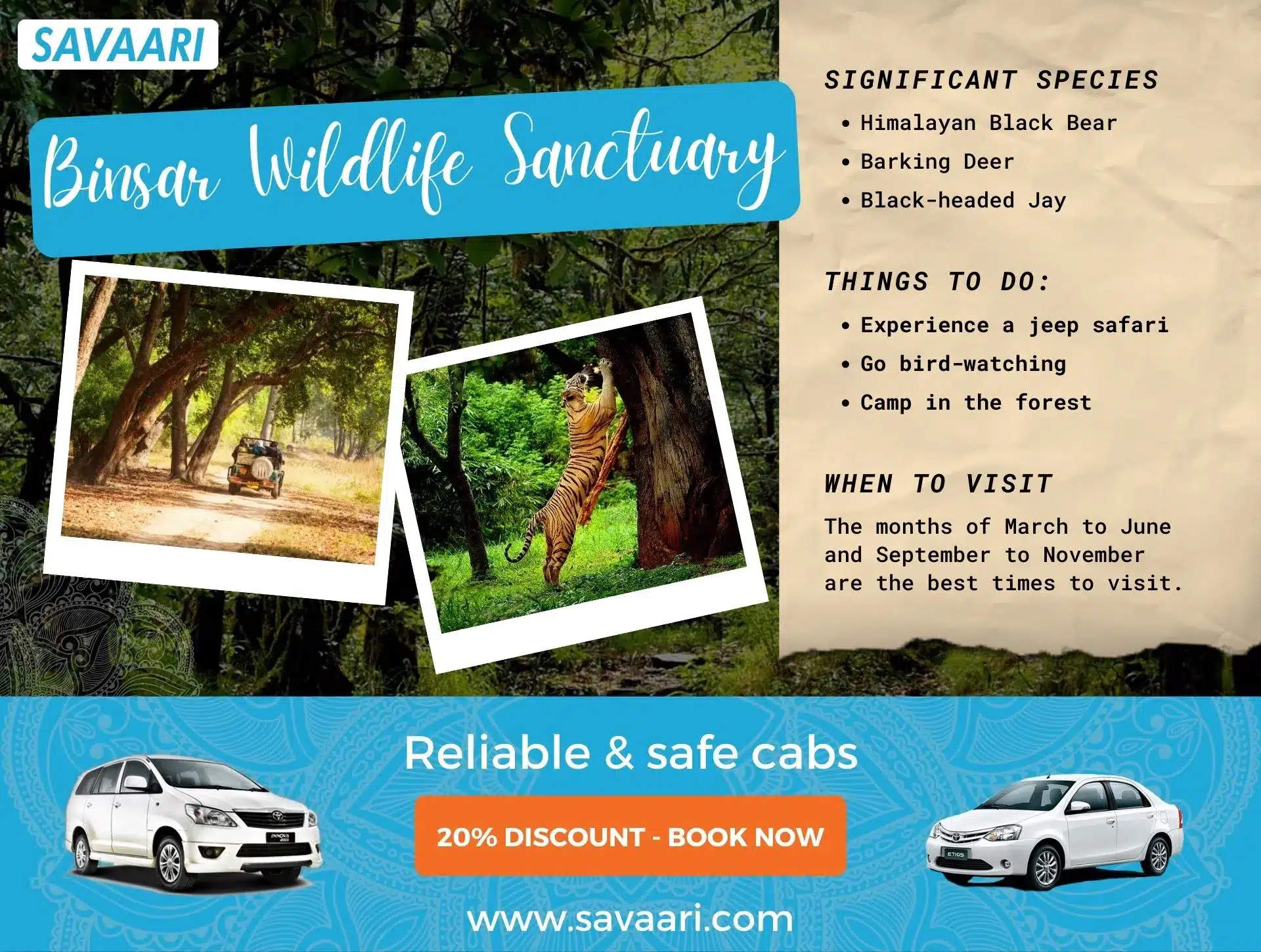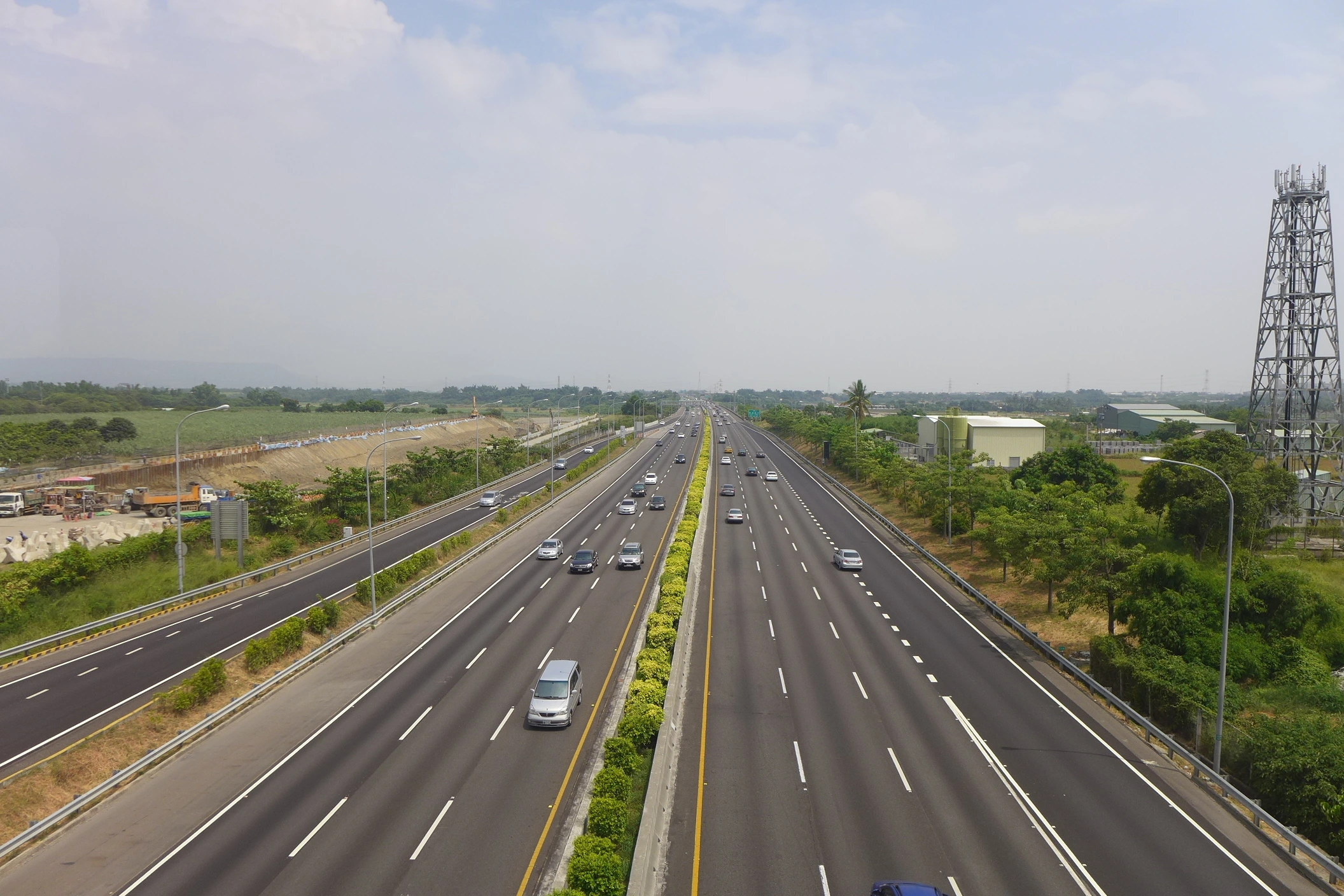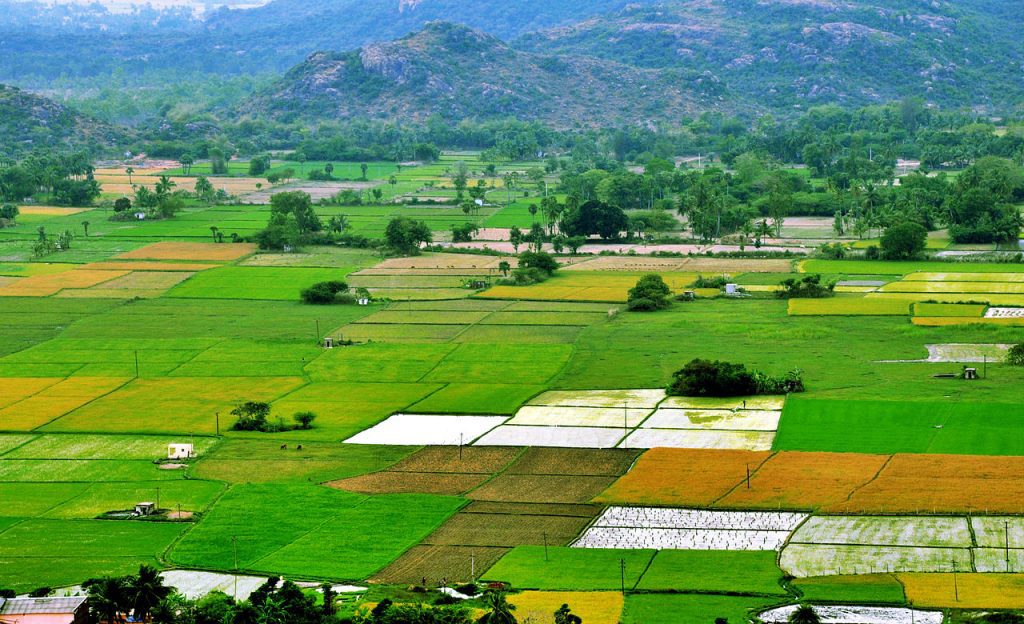Located in the beautiful Kumaon region of Uttarakhand, India, Binsar Wildlife Sanctuary is a lesser-known but equally captivating destination for nature and wildlife enthusiasts. Unlike the more popular national parks, Binsar offers a tranquil retreat into the heart of the Himalayas, where you can immerse yourself in the beauty of lush-green forests, diverse wildlife, and breathtaking views of the snow-capped peaks.
Whether you’re an avid birder, a nature lover, or simply looking to escape the busy city life, Binsar has got you covered. In this guide, we’ll discuss everything you need to know about Binsar Wildlife Sanctuary, from its history and wildlife to the best activities and tips for planning your visit. Book a car rental in Delhi and travel to the serene Binsar Wildlife Sanctuary in comfortable, chauffeur-driven Savaari cabs.
Table of Contents
- About Binsar Wildlife Sanctuary
- Things to Do in Binsar Wildlife Sanctuary for Free
- How to Plan a Trip to Binsar Wildlife Sanctuary?
- Hotels and Accommodations in Binsar Wildlife Sanctuary
- Nearby Road Trips from Binsar Wildlife Sanctuary
- Useful Links
About Binsar Wildlife Sanctuary
Binsar Wildlife Sanctuary is located about 30 kilometers from the town of Almora in Uttarakhand. Established in 1988, this sanctuary covers an area of approximately 45 square kilometers and is perched at an altitude ranging from 900 to 2,500 meters. The sanctuary is known for its dense forests, rich biodiversity, and panoramic views of the Himalayan range.
What makes Binsar unique is its peaceful ambiance. Unlike other crowded wildlife sanctuaries, this site offers a more intimate experience with nature. The sanctuary is also home to Zero Point, the highest point in the area, from where you can enjoy stunning views of the Himalayan peaks like Nanda Devi, Trishul, and Kedarnath.
History of Binsar Wildlife Sanctuary
Binsar Wildlife Sanctuary was once the summer capital of the Chand Kings, who ruled the Kumaon region in the 11th century. The region was prized for its cool climate, dense forests, and abundant wildlife. Over the years, Binsar has attracted poets, writers, and nature lovers, all of whom have been captivated by its serene beauty.
In 1988, the area was declared a wildlife sanctuary to protect its rich biodiversity and to preserve the unique flora and fauna of the region. Today, it is a popular destination for eco-tourism and attracts visitors from around the world who come to experience its natural beauty and tranquility.
Flora and Fauna of Binsar
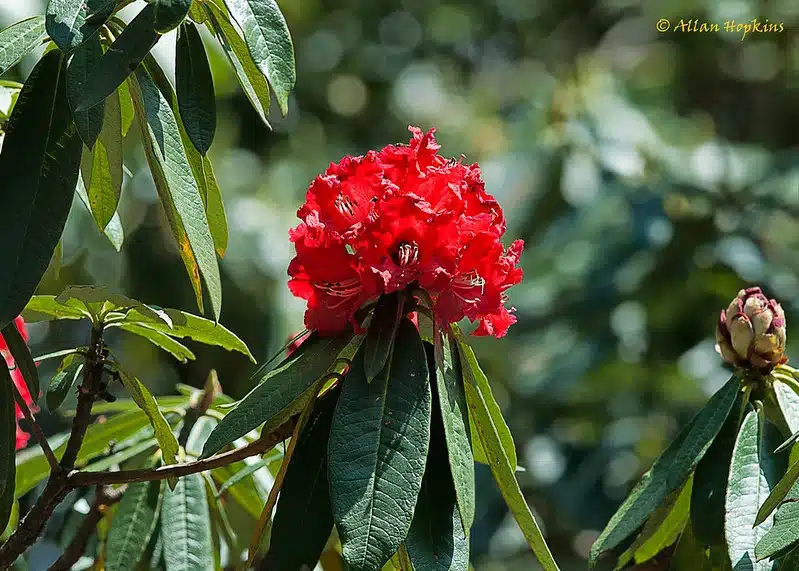
The Binsar Wildlife Sanctuary is a treasure trove of biodiversity. The sanctuary is predominantly covered with oak, rhododendron, pine, and deodar forests, which create a lush green canopy over the area. In spring, the rhododendrons bloom in vibrant shades of red and pink, adding a splash of color to the landscape.
Flora in Binsar:
- Oak (Quercus leucotrichophora)
- Rhododendron (Rhododendron arboreum)
- Pine (Pinus roxburghii)
- Deodar (Cedrus deodara)
- Uttarakhand’s State Flower, the Brahma Kamal (Saussurea obvallata)
Fauna in Binsar:
Binsar is home to a wide variety of wildlife, including several species of mammals, birds, and reptiles. Some of the key species you might encounter here include:
- Leopard
- Himalayan Black Bear
- Barking Deer
- Himalayan Goral
- Yellow-throated Marten
- Langur
- Porcupine
- Flying Squirrel
Birdlife in Binsar:
For birdwatchers, Binsar is a paradise. The sanctuary is home to over 200 species of birds, making it one of the best birding destinations in India. Some of the rare birds to watch out for are:
- Eurasian Jay
- Koklass Pheasant
- Monal
- Black-headed Jay
- White-capped Redstart
- Yellow-bellied Fantail
- Great Barbet
Lesser-Known Facts About Binsar Wildlife Sanctuary
Here are some lesser-known and interesting facts about Binsar Wildlife Sanctuary:
- Binsar Wildlife Sanctuary is located at an altitude of 2,420 meters, offering breathtaking views of the Himalayas, including peaks like Nanda Devi, Trishul, and Kedarnath.
- The sanctuary has over 200 species of birds. Some rare species, like the Black-throated Sunbird and White-tailed Nuthatch, can be spotted here.
- The sanctuary houses the Mahadev Temple, dedicated to Lord Shiva, which dates back to the 9th century.
- The highest point in Binsar, known as Zero Point, offers a stunning view of the surrounding peaks and valleys.
- The wildlife sanctuary promotes ecotourism with limited accommodation options, ensuring that the natural environment is preserved.
- The sanctuary is home to several nocturnal animals, including leopards, barking deer, and flying squirrels.
- Unlike other popular tourist spots in Uttarakhand, Binsar remains relatively unexplored, offering peace and tranquility.
- The forests are rich in medicinal plants used by local communities for traditional healing practices.
- The region around Binsar is steeped in Kumaoni culture, with local villages preserving their traditional way of life.
Reasons to Visit Binsar Wildlife Sanctuary
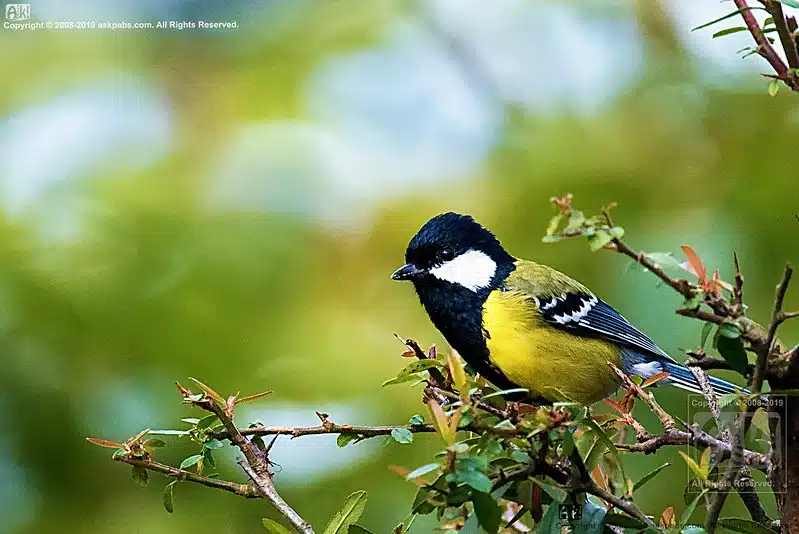
Some of the most compelling reasons to visit Binsar Wildlife Sanctuary are:
Eco-Tourism Experience: Binsar promotes ecotourism, focusing on preserving the natural environment while offering visitors an authentic experience. Staying in eco-friendly accommodations like forest lodges or homestays helps you connect with nature while minimizing your environmental impact.
Bird Watching Haven: With over 200 species of birds, Binsar is a bird watcher’s paradise. You can spot rare and colorful birds like the Himalayan woodpecker, parakeet, and the beautiful Monal, the state bird of Uttarakhand. The tranquil surroundings make birdwatching a serene and rewarding experience.
Refreshing Climate: Binsar enjoys a pleasant climate throughout the year, making it a great escape from the summer heat. Whether you visit in the cool winter or the refreshing monsoon season, the weather enhances the charm of the sanctuary.
Unexplored and Less Crowded: Unlike many other tourist destinations, Binsar is relatively unexplored and less crowded. This means you can enjoy the beauty of nature in peace without the usual tourist rush, making it an ideal spot for solitude and introspection.
Things to Do Around Binsar Wildlife Sanctuary
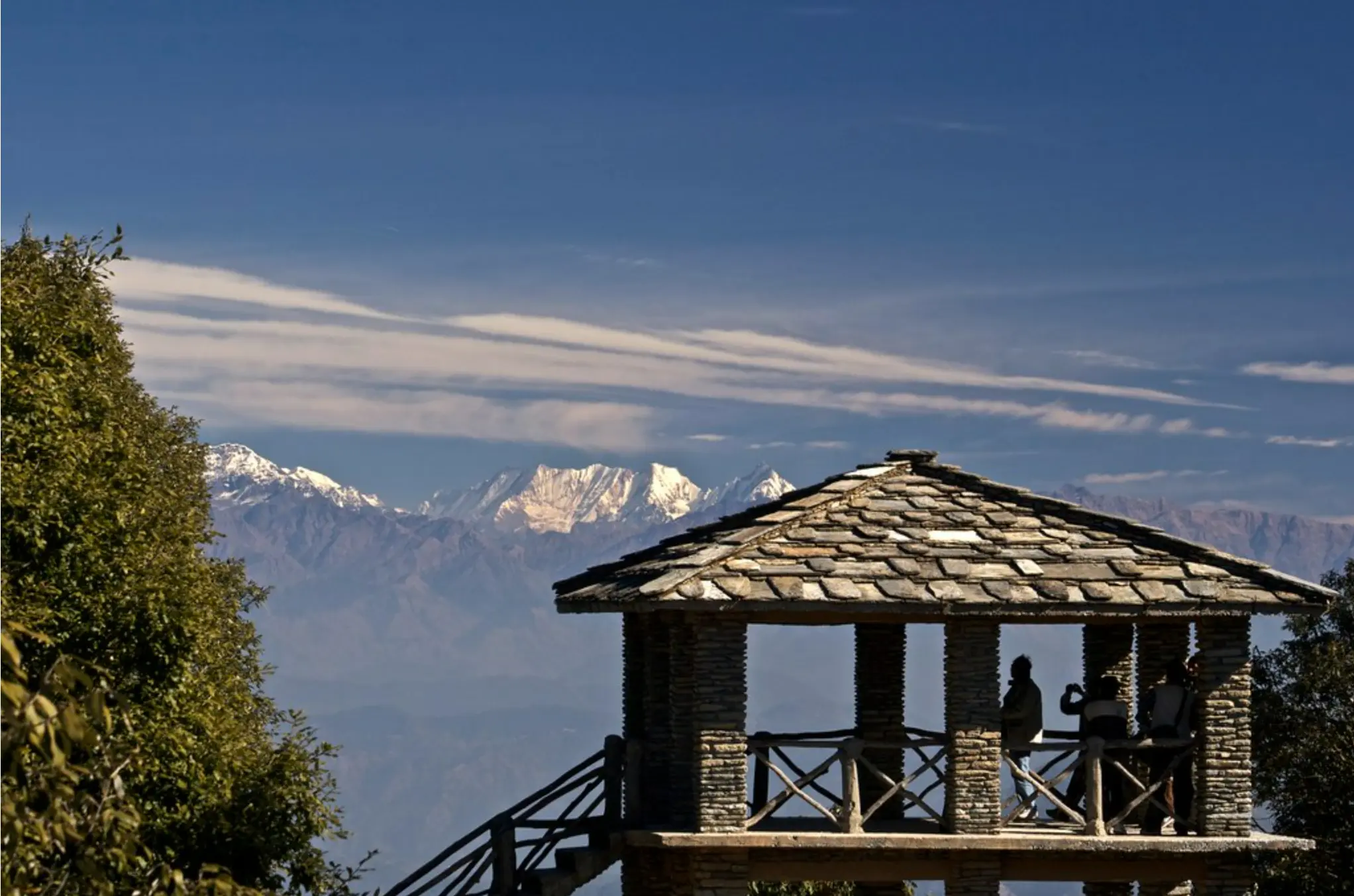
While Binsar Wildlife Sanctuary is the main attraction, there are several other places nearby that are worth exploring. Here are some of the top spots to visit around the sanctuary:
- Binsar Zero Point: As mentioned earlier, Binsar Zero Point is the highest point in the sanctuary and offers panoramic views of the Himalayan range. On a clear day, you can see peaks like Nanda Devi, Trishul, and Kedarnath. The trek to Zero Point is relatively easy and takes about 2-3 hours.
- Entry Fee: INR 150 per person (Valid for 3 Days)
- Timings: 9 AM – 5:30 PM
- Days Open: Every Day
- Kasar Devi Temple: Located just a short drive from Binsar, the Kasar Devi Temple is a small yet significant temple dedicated to the Hindu goddess Kasar Devi. The temple is famous for its serene ambiance and the stunning views it offers of the surrounding valleys. The area around the temple is also known for its spiritual energy and has attracted several renowned personalities over the years, including Swami Vivekananda and Bob Dylan.
- Timings: 7 AM – 7 PM
- Days Open: Every Day
- Golu Devata Temple: Golu Devta Temple, located near Binsar, is a unique temple dedicated to the local deity Golu Devta, who is believed to be an incarnation of Lord Shiva. The temple is famous for its bells, which are offered by devotees as a symbol of their fulfilled wishes. The temple is set in a beautiful location amidst dense forests, making it a peaceful place to visit.
- Timings: 6 AM – 10 PM
- Open Days: Every Day
- Jageshwar Dham: Located about 50 kilometers from Binsar, Jageshwar Dham is a group of ancient temples dedicated to Lord Shiva. The temples date back to the 9th and 13th centuries and are known for their unique architecture and spiritual significance. The site is surrounded by dense deodar forests, adding to its mystical charm. A visit to Jageshwar Dham is highly recommended for those interested in history and spirituality.
- Timings: 6 AM – 7 PM
- Open Days: Every Day
How to Plan a Trip to Binsar Wildlife Sanctuary?
The best time to visit Binsar Wildlife Sanctuary is between October and March when the weather is pleasant. Book your stay in advance at a forest rest house or a hotel nearby.
Plan a guided walk to explore the beautiful scenery and wildlife. Make sure you have the right permits and a good guide to help you. Don’t forget to pack warm clothes, comfortable shoes, and a camera to capture the amazing views and animals.
How to Reach Binsar Wildlife Sanctuary?
Binsar Wildlife Sanctuary is well-connected by road, and there are several other ways to reach the sanctuary:
By Air:
The nearest airport to Binsar is Pantnagar Airport, located about 150 kilometers away. But the nearest international airport is the Jolly Grant Airport in Dehradun, located 357km away. You can book an airport taxi in Dehradun with Savaari’s car rental booking app and travel to your destination.
By Train:
The nearest railway station to Binsar is Kathgodam, located about 120 kilometers away. Kathgodam is well-connected to major cities like Delhi and Kolkata. You can hire a Savaari taxi service in Kathgodam or take a bus to Almora and then proceed to Binsar.
By Road:
Binsar is well connected by road to major cities in Uttarakhand and northern India. The sanctuary is located about 380 kilometers from Delhi, and the drive takes about 9-10 hours. You can book a Savaari cab from Delhi to Binsar. Alternatively, you can also book a car rental in Dehradun to travel to Binsar with Savaari.
While traveling to the wildlife sanctuary via road it is better to hire an experienced driver who knows how to drive in high altitudes and uneven terrains. Hire a Savaari taxi to Binsar Wildlife Sanctuary to ensure you get the most experienced drivers to carry you smoothly through rough terrains.
Best Time to Visit Binsar
The months of March to June and September to November are the best times to visit Binsar. These months offer pleasant weather and clear skies, making it the ideal time for outdoor activities like trekking, birdwatching, and wildlife safaris. If you’re planning to visit during the winter months (December to February), be prepared for cold temperatures and possible snowfall.
Travel Tips for Visiting Binsar Wildlife Sanctuary
- Carry Sufficient Cash: There are limited ATMs in and around the sanctuary offices, so it’s advisable to carry enough cash for your expenses.
- Mobile Connectivity: Mobile connectivity is limited, so inform your loved ones before you enter the sanctuary. It’s also a good idea to download offline maps and guides.
- Stay Hydrated: The high altitude can make you feel dehydrated, so make sure to drink plenty of water.
- Respect Local Culture: The Kumaon region has a rich cultural heritage, so be respectful of local customs and traditions.
Binsar Wildlife Sanctuary Safari timings
A safari is a special way to see nature up close. As you drive through the forest, you might spot animals like leopards, deer, and many kinds of birds. The peaceful environment and beautiful views of the mountains make it a great place for nature lovers.
- Entry Fee: INR 150 per person (Indian Nationals), INR 75 per person (Students), and INR 600 per person (Foreign Nationals)
- Safari Timings: 9 AM – 7:30 PM
- Days Open: Every Day
- Vehicle Fee: INR 500 + INR 250 (base fare) (Medium Vehicle) and INR 800 + INR 250 (base fare) (Heavy Vehicle)
Things to do in Binsar Wildlife Sanctuary for Free

Some of the most enjoyable things to do in Binsar Wildlife Sanctuary for free are:
- Birdwatching: The sanctuary’s rich avian population offers endless opportunities for birdwatching. Early morning walks through the forest trails are the best time to observe and photograph the various bird species. Don’t forget to bring a pair of binoculars and a field guide to help you identify the different birds.
- Trekking: The sanctuary offers several trekking trails that take you through dense forests, open meadows, and quaint villages. The most popular trek is to Binsar Zero Point, which offers panoramic views of the surrounding Himalayan peaks. The moderately difficult hike takes two to three hours to finish. Along the way, you’ll pass through rhododendron and oak forests and might even spot some wildlife.
- Photography: With its stunning beauty and diverse wildlife, Binsar is a photographer’s dream. Whether you’re an amateur or a professional photographer, you’ll find plenty of opportunities to capture the beauty of the sanctuary. Early morning and late afternoon, when the light is soft and golden, are the ideal times for photography.
- Camping: If you’re looking for a truly immersive experience, consider camping inside the sanctuary. There are a few eco-friendly campsites where you can pitch your tent and spend the night under the stars. Camping in Binsar allows you to experience the sounds of the forest at night and wake up to the sight of the sun rising over the mountains.
Hotels and Resorts in Binsar Wildlife Sanctuary
Binsar offers a range of accommodation options to suit different budgets and preferences. Here are some of the popular places to stay in Binsar:
| Hotel Name | Address | Contact Number |
| Binsar Forest Retreat | Near Khali Estate, Post Ayarpani, Binsar Wildlife Sanctuary, Almora, Uttarakhand 263601 | +91 99103 45220 |
| Mary Budden Estate | Binsar Wildlife Sanctuary, Almora, Uttarakhand 263601 | +91 97111 71350 |
| KMVN Tourist Rest House | Binsar Road, Almora, Uttarakhand 263628 | +91 86500 02537 |
| Mountain Resort, Khali Estate | P.O. Ayarpani, Almora, Uttarakhand 263601 | +91 96399 89902 |
| Grand Oak Manor | Jhandi Dhar, Near Binsar Wildlife Sanctuary Gate, Regariya, Uttarakhand 263628 | +91 96020 91000 |
Nearby Road Trips from Binsar
This wildlife sanctuary is a great base for exploring the surrounding region, and there are several scenic road trips you can take from here. Some of the top road trips from Binsar include:
| Destination | Distance from Binsar (Approx.) |
| Binsar to Almora | 25 km |
| Binsar to Ranikhet | 57 km |
| Binsar to Kausani | 62 km |
| Binsar to Nainital | 88 km |
| Binsar to Mukteshwar | 65 km |
| Binsar to Pithoragarh | 131 km |
| Binsar to Munsiyari | 183 km |
These destinations offer a variety of experiences, from spiritual visits to Mukteshwar to the scenic beauty of Kausani and Nainital, making them ideal for road trips from this sanctuary. Download the Savaari cab booking app to book car rentals and reach your destination hassle-free.
Useful Links
- Uttarakhand Tourism official website
- A red-rhododendron weekend in Binsar
- First-Ever Tiger Sighting in Binsar
Last Updated on October 26, 2024 by V Subhadra



